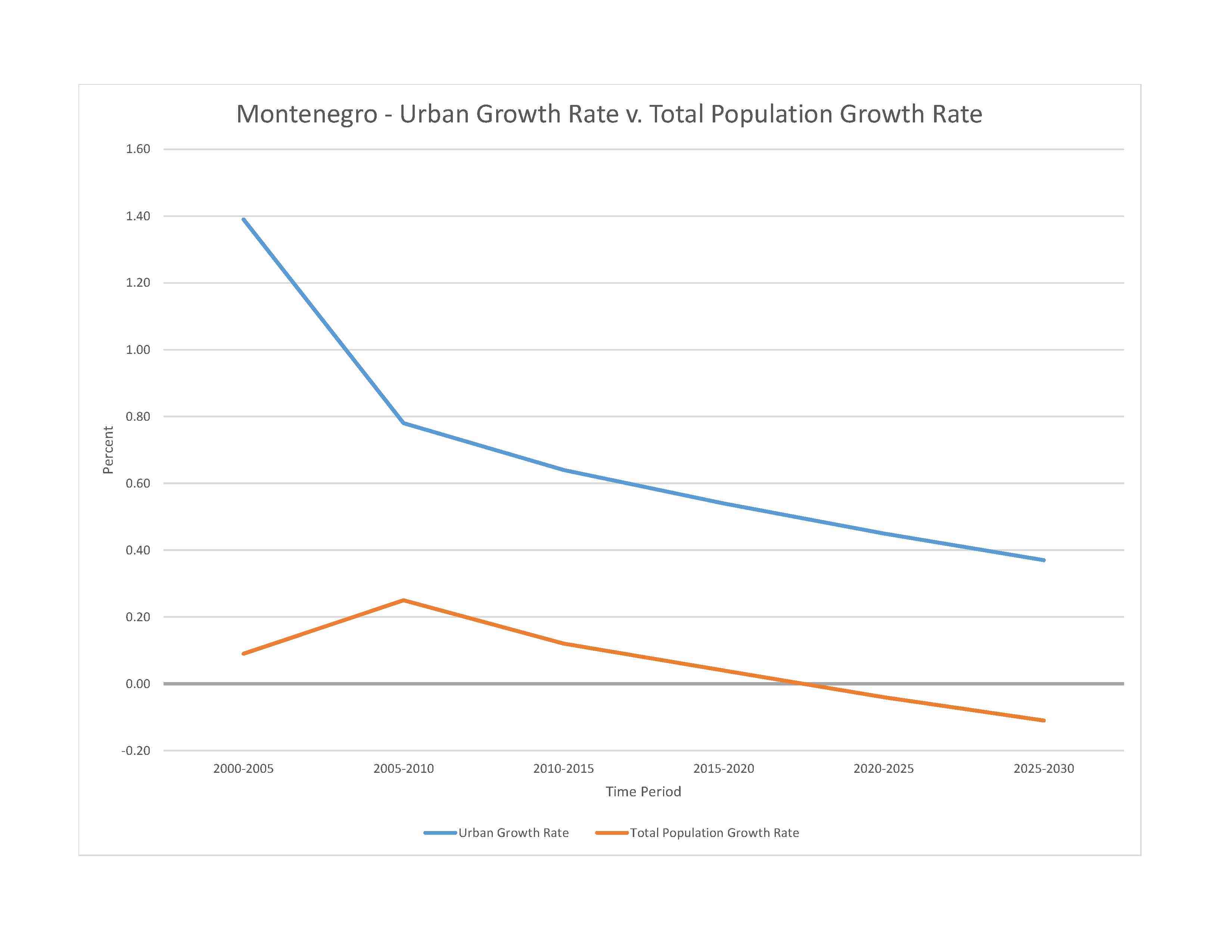
602,445 (2023 est.)
noun: Montenegrin(s)
adjective: Montenegrin
Montenegrin 45%, Serbian 28.7%, Bosniak 8.7%, Albanian 4.9%, Muslim 3.3%, Romani 1%, Croat 1%, other 2.6%, unspecified 4.9% (2011 est.)
Serbian 42.9%, Montenegrin (official) 37%, Bosnian 5.3%, Albanian 5.3%, Serbo-Croat 2%, other 3.5%, unspecified 4% (2011 est.)
major-language sample(s):
Knjiga svetskih činjenica, neophodan izvor osnovnih informacija. (Serbian)
Knjiga svjetskih činjenica, neophodan izvor osnovnih informacija. (Montenegrin/Bosnian)
The World Factbook, the indispensable source for basic information.
Serbian audio sample:
Montenegrin/Bosnian audio sample:
Orthodox 72.1%, Muslim 19.1%, Catholic 3.4%, atheist 1.2%, other 1.5%, unspecified 2.6% (2011 est.)
0-14 years: 17.93% (male 55,690/female 52,340)
15-64 years: 64.65% (male 194,334/female 195,127)
65 years and over: 17.42% (2023 est.) (male 45,993/female 58,961)
total dependency ratio: 52.5
youth dependency ratio: 27.7
elderly dependency ratio: 24.8
potential support ratio: 4 (2021 est.)
total: 40.7 years (2023 est.)
male: 39.2 years
female: 42.2 years
-0.43% (2023 est.)
11 births/1,000 population (2023 est.)
10.3 deaths/1,000 population (2023 est.)
-5 migrant(s)/1,000 population (2023 est.)
highest population density is concentrated in the south, southwest; the extreme eastern border is the least populated area
urban population: 68.5% of total population (2023)
rate of urbanization: 0.45% annual rate of change (2020-25 est.)

177,000 PODGORICA (capital) (2018)
at birth: 1.04 male(s)/female
0-14 years: 1.06 male(s)/female
15-64 years: 1 male(s)/female
65 years and over: 0.78 male(s)/female
total population: 0.97 male(s)/female (2023 est.)
26.3 years (2010 est.)
6 deaths/100,000 live births (2020 est.)
total: 3.2 deaths/1,000 live births (2023 est.)
male: 2.7 deaths/1,000 live births
female: 3.7 deaths/1,000 live births
total population: 78 years (2023 est.)
male: 75.6 years
female: 80.5 years
1.81 children born/woman (2023 est.)
0.89 (2023 est.)
20.7% (2018)
improved: urban: 100% of population
rural: 98.2% of population
total: 99.4% of population
unimproved: urban: 0% of population
rural: 1.8% of population
total: 0.6% of population (2020 est.)
11.4% of GDP (2020)
2.74 physicians/1,000 population (2020)
3.9 beds/1,000 population (2017)
improved: urban: 100% of population
rural: 93.9% of population
total: 98% of population
unimproved: urban: 0% of population
rural: 6.1% of population
total: 2% of population (2020 est.)
degree of risk: intermediate (2023)
food or waterborne diseases: bacterial diarrhea
vectorborne diseases: Crimean-Congo hemorrhagic fever
23.3% (2016)
total: 9.91 liters of pure alcohol (2019 est.)
beer: 3.83 liters of pure alcohol (2019 est.)
wine: 2.68 liters of pure alcohol (2019 est.)
spirits: 3.22 liters of pure alcohol (2019 est.)
other alcohols: 0.16 liters of pure alcohol (2019 est.)
total: 31.4% (2020 est.)
male: 31.6% (2020 est.)
female: 31.1% (2020 est.)
3.7% (2018/19)
57.1% (2023 est.)
women married by age 15: 1.9%
women married by age 18: 5.8%
men married by age 18: 3.2% (2018 est.)
N/A
definition: age 15 and over can read and write
total population: 99%
male: 99.4%
female: 98.5% (2021)
total: 15 years
male: 15 years
female: 16 years (2021)
NOTE: The information regarding Montenegro on this page is re-published from the 2024 World Fact Book of the United States Central Intelligence Agency and other sources. No claims are made regarding the accuracy of Montenegro 2024 information contained here. All suggestions for corrections of any errors about Montenegro 2024 should be addressed to the CIA or the source cited on each page.
This page was last modified 04 May 24, Copyright © 2024 ITA all rights reserved.